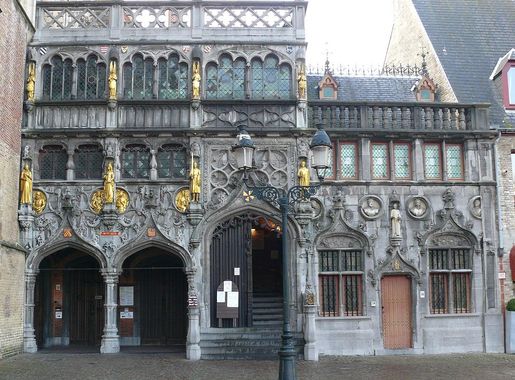
Bruges: The Venice of the North
Discover Bruges, the enchanting medieval city in Belgium, renowned for its canals, historic architecture, and world-famous chocolates and beers.
Nestled in the heart of Belgium, Bruges is a city where time seems to stand still. This picturesque city is known for its medieval architecture, winding canals, and cobblestone streets. The entire historic center of Bruges is a UNESCO World Heritage Site, making it a treasure trove of history and culture. One of the first things you'll notice about Bruges is its stunning canals, often compared to Venice. These waterways offer charming boat tours that provide a unique perspective of the city's medieval buildings and bridges. The Belfry of Bruges, standing tall in the Market Square, offers panoramic views of the city, rewarding those who climb its 366 steps. Bruges is also a haven for art lovers, with the Groeningemuseum housing works by Flemish masters. The city's chocolate shops and breweries are legendary, offering some of the finest Belgian chocolates and beers. Don't miss a visit to the Choco-Story Museum to learn about the history of chocolate, or a tour of the De Halve Maan Brewery for a taste of authentic Bruges beer. As you wander through the city's narrow streets, you'll stumble upon charming boutiques, cozy cafes, and beautiful squares like Burg Square, home to the Gothic-style Town Hall. Bruges is a city that invites you to slow down, savor the moment, and immerse yourself in its rich history and culture.
Local tips in Bruges
- Visit during weekdays to avoid the weekend crowds and get a more intimate experience of the city.
- Rent a bike to explore the outskirts of the city and enjoy the scenic countryside of Flanders.
- Try the local delicacy, mussels with fries, at one of the many cozy restaurants.
- Take a guided boat tour to see the city from its picturesque canals.
- Visit the Christmas Market if you're traveling in winter for a magical holiday atmosphere.
Neighbourhoods in Bruges
Bruges: The Venice of the North
Nestled in the heart of Belgium, Bruges is a city where time seems to stand still. This picturesque city is known for its medieval architecture, winding canals, and cobblestone streets. The entire historic center of Bruges is a UNESCO World Heritage Site, making it a treasure trove of history and culture. One of the first things you'll notice about Bruges is its stunning canals, often compared to Venice. These waterways offer charming boat tours that provide a unique perspective of the city's medieval buildings and bridges. The Belfry of Bruges, standing tall in the Market Square, offers panoramic views of the city, rewarding those who climb its 366 steps. Bruges is also a haven for art lovers, with the Groeningemuseum housing works by Flemish masters. The city's chocolate shops and breweries are legendary, offering some of the finest Belgian chocolates and beers. Don't miss a visit to the Choco-Story Museum to learn about the history of chocolate, or a tour of the De Halve Maan Brewery for a taste of authentic Bruges beer. As you wander through the city's narrow streets, you'll stumble upon charming boutiques, cozy cafes, and beautiful squares like Burg Square, home to the Gothic-style Town Hall. Bruges is a city that invites you to slow down, savor the moment, and immerse yourself in its rich history and culture.
When is the best time to go to Bruges?
Iconic landmarks you can’t miss
Belfry of Bruges
Explore the Belfry of Bruges: A Historic Landmark Offering Stunning Views and a Glimpse into the City's Rich Heritage.
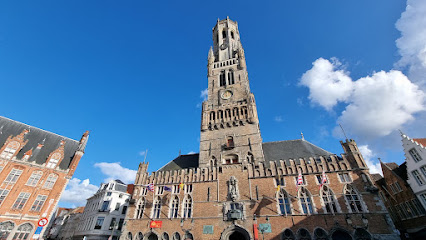
Market Square
Discover the vibrant heart of Bruges at Market Square, where history, culture, and local life come together in a breathtaking setting.
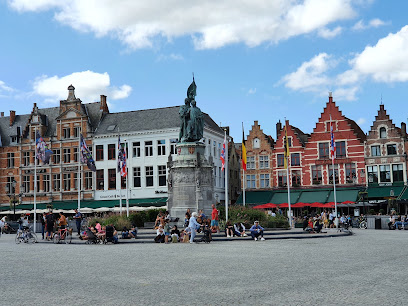
Minnewater Park
Discover the serene beauty of Minnewater Park in Bruges, where nature and history intertwine in a picturesque setting perfect for relaxation.
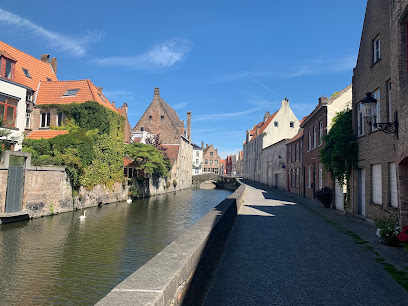
Church of Our Lady
Discover the Church of Our Lady, a stunning Gothic masterpiece in Bruges, showcasing art, history, and serene beauty in the heart of the city.
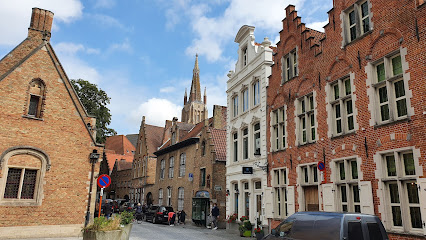
Boattour Bruges
Explore the serene canals of Bruges on a captivating boat tour, unveiling the city's rich history and stunning architecture from a unique vantage point.

Sint-Salvatorskathedraal
Explore the architectural wonder of Sint-Salvatorskathedraal, a historical gem in Bruges, where spirituality meets artistry in a serene atmosphere.
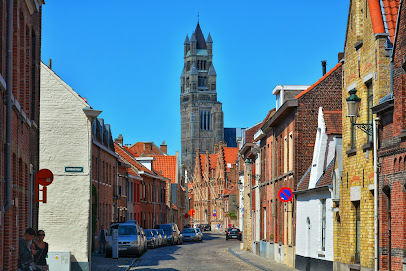
Bruges Beer Experience
Explore the rich history of Belgian brewing at the Bruges Beer Experience, where interactive exhibits and tastings await every beer enthusiast.
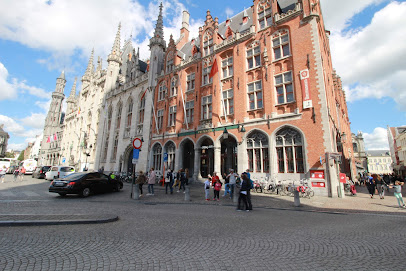
Basilica of the Holy Blood
Explore the stunning Basilica of the Holy Blood in Bruges, a historic Catholic church housing the revered relic of Christ's blood and captivating architecture.
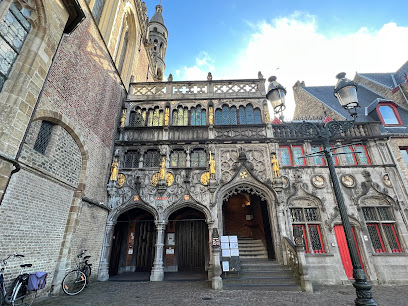
Historium Bruges
Explore the rich history of Bruges at Historium, where the medieval era comes alive through immersive exhibits and stunning visuals.

Huisbrouwerij De Halve Maan
Immerse yourself in the brewing heritage of Bruges at Huisbrouwerij De Halve Maan, where history meets flavor in every sip.
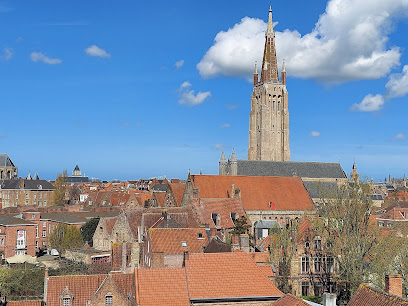
De Burg
Discover the captivating charm of De Burg in Bruges, a historical landmark surrounded by stunning architecture and vibrant local culture.
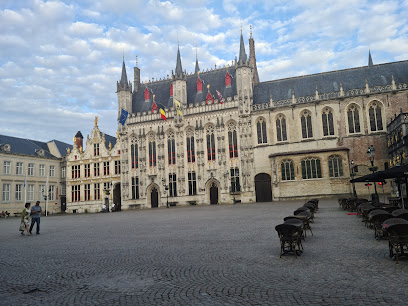
Boniface Bridge (Bonifaciusbrug)
Explore the enchanting Boniface Bridge in Bruges, a picturesque landmark perfect for photography and soaking in the city's rich history.
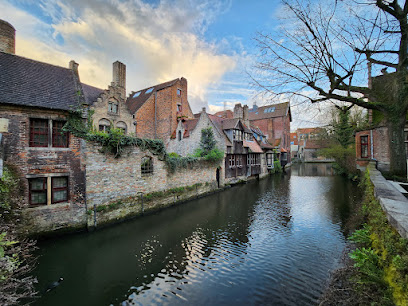
Frietmuseum
Explore the unique culinary history of Belgian fries at the Frietmuseum in Bruges, a delightful local history museum perfect for food lovers.
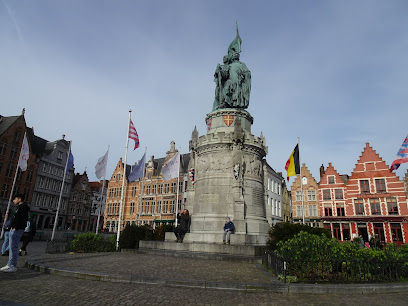
Groeninge Museum
Discover the Groeninge Museum in Bruges, home to a stunning collection of Flemish masterpieces and a deep dive into the region's artistic heritage.
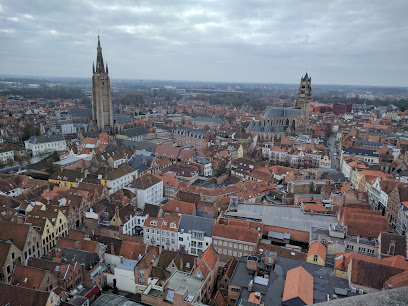
Torture Museum Oude Steen Brugge
Uncover the chilling history of punishment and justice at the Torture Museum Oude Steen in Bruges, a must-visit for history enthusiasts.
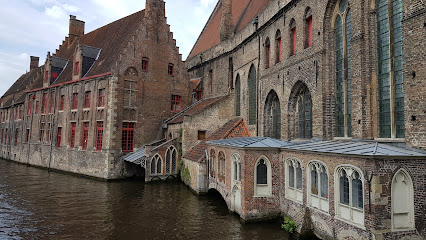
Unmissable attractions to see
Castle of the Counts
Explore the Castle of the Counts in Ghent, a historic marvel showcasing medieval architecture and captivating stories from Belgium's past.
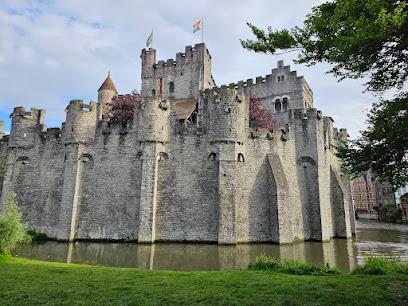
Gravensteen
Discover the fascinating history and stunning architecture of Gravensteen Castle, a must-visit landmark in Ghent's rich cultural landscape.
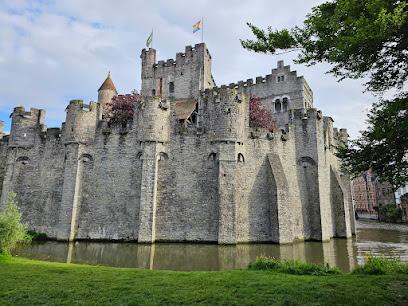
Belfort
Experience the breathtaking views and rich history of Bruges at the iconic Belfort, a UNESCO World Heritage site and must-see attraction.
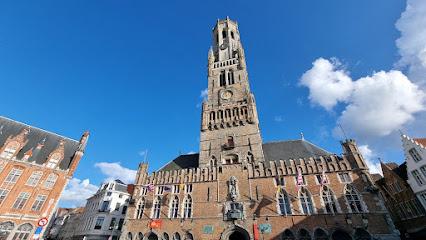
Saint Bavo's Cathedral
Discover the beauty of Saint Bavo's Cathedral in Ghent, a stunning Gothic masterpiece filled with art, history, and serene ambiance.
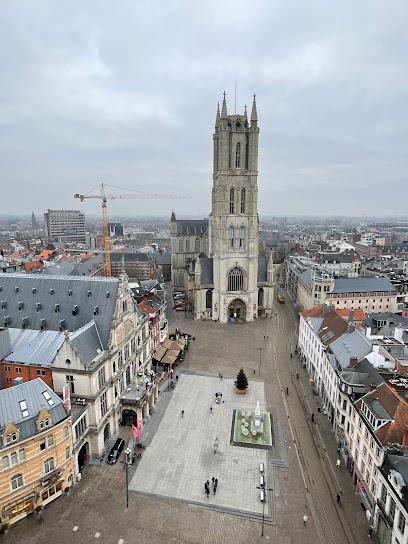
Minnewater Park
Discover the serene beauty of Minnewater Park in Bruges, a romantic haven with enchanting landscapes and rich history waiting to be explored.
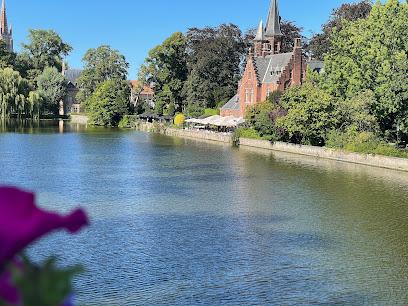
Church of Our Lady
Discover the breathtaking Church of Our Lady in Bruges, home to incredible art and a stunning Gothic tower, a true highlight of your Belgian adventure.
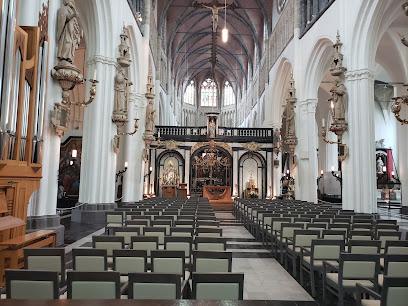
Choco-Story, Chocolate Museum
Discover the rich history of chocolate at Choco-Story in Bruges, a delightful museum and interactive experience for all chocolate lovers.
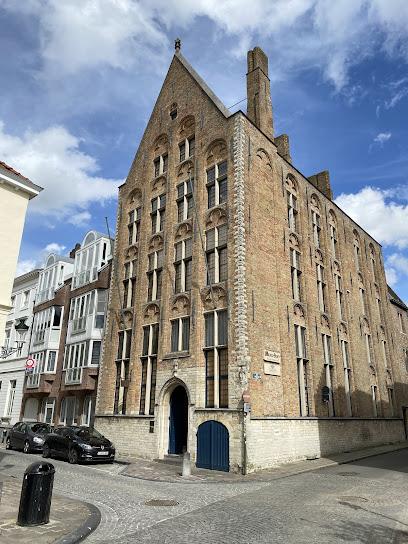
In Flanders Fields Museum
Discover the poignant history of World War I at the In Flanders Fields Museum in Ypres, where stories of bravery and sacrifice come to life through immersive exhibits.
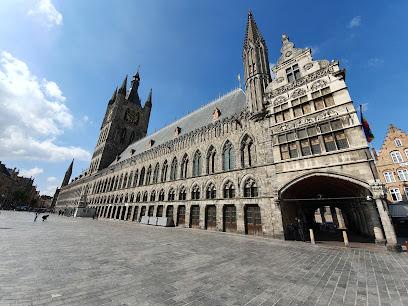
Sint-Salvatorskathedraal
Discover the architectural beauty and historical significance of Sint-Salvatorskathedraal in Bruges, a must-visit for art and history enthusiasts.
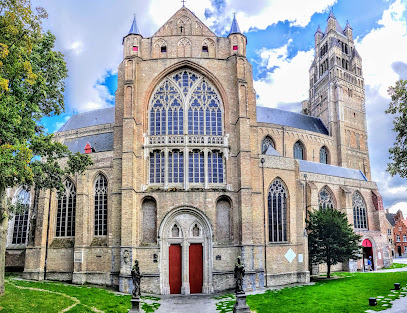
KAA Gent Stadium
Discover the excitement of KAA Gent Stadium in Ghent, Belgium - a premier venue for soccer and thrilling events.

Zwin Natuur Park
Explore the rich biodiversity and stunning landscapes of Zwin Natuur Park, a premier nature preserve and tourist attraction in Knokke-Heist, Belgium.
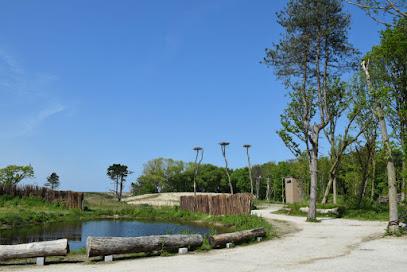
Kursaal Oostende
Experience the vibrant cultural scene and stunning architecture of Kursaal Oostende, a premier event venue on the Belgian coast.

Bruges Beer Experience
Uncover the rich heritage of Belgian brewing at the Bruges Beer Experience, where history and flavor come together in an unforgettable tasting journey.
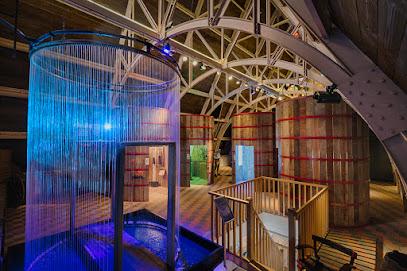
VIERNULVIER
Discover the vibrant arts and culture scene at VIERNULVIER in Ghent, where creativity comes alive through music, art, and performances.
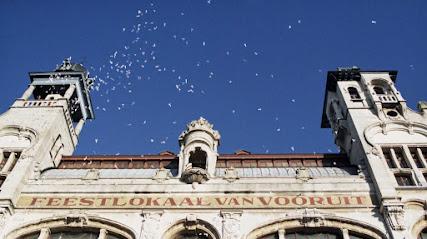
2be shop / The Beerwall / 2be bar
Discover the best of Belgian beer culture at 2be Shop and Beerwall in Bruges, where over 1,000 beers await your taste buds in a cozy atmosphere.
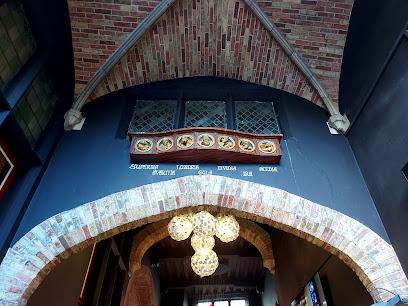
Essential places to dine
That's Toast
Discover That's Toast in Bruges – where every brunch is an exquisite culinary adventure waiting for you.
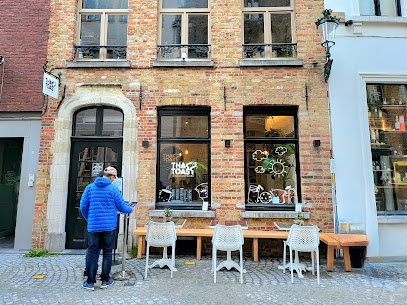
Poules Moules
Discover authentic Belgian seafood at Poules Moules in Bruges - where every dish tells a story of flavor and tradition.
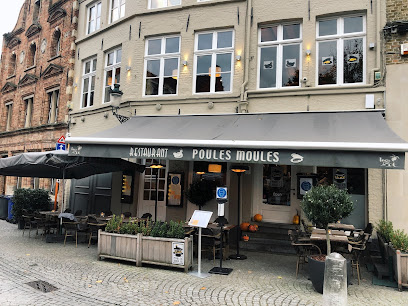
De Gastro
Experience authentic Belgian cuisine at De Gastro in Bruges - where tradition meets flavor in every dish.
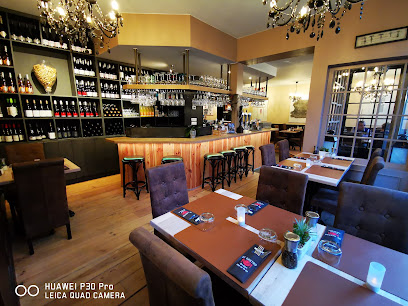
Mozart, More Than Just Ribs
Experience exquisite ribs and delightful Belgian cuisine at Mozart in Bruges - where every meal is a celebration.
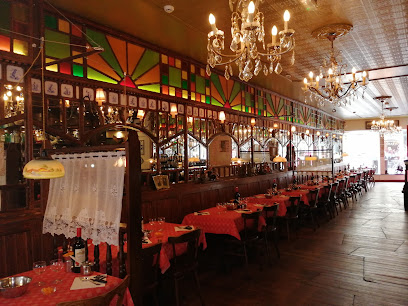
The Olive Tree Brugge
Experience authentic Greek cuisine at The Olive Tree Brugge – where Mediterranean flavors meet Belgian charm.
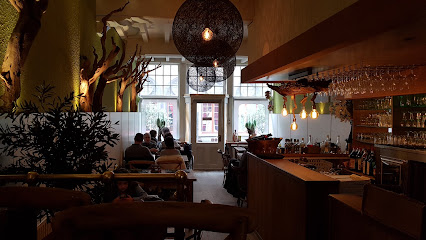
Restaurant Diligence
Experience the taste of Belgium at Restaurant Diligence in Bruges - where tradition meets culinary excellence.
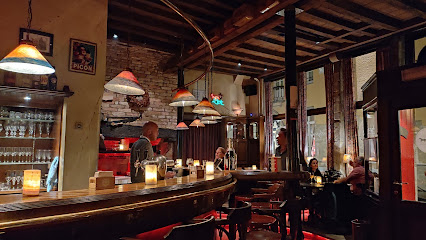
Bij Koen & Marijke - In't Nieuw Museum
Discover Bij Koen & Marijke - In't Nieuw Museum in Bruges for exquisite Argentinian barbecue and delightful Belgian cuisine.
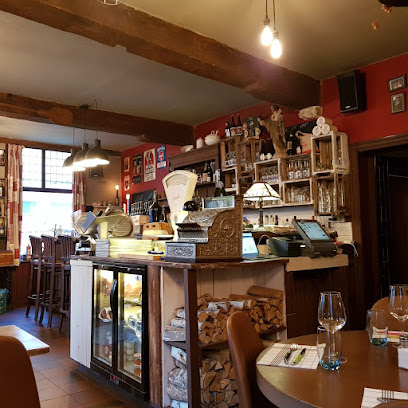
Bistro Zwart Huis
Discover the flavors of Belgium at Bistro Zwart Huis in Bruges - where local cuisine meets cozy ambiance.

Tompouce
Discover the flavors of Belgium at Tompouce in Bruges - where every meal tells a story.
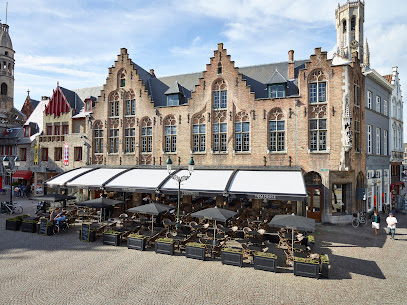
Belgian Pigeon House
Experience authentic Belgian dining at the Belgian Pigeon House in Bruges, where traditional flavors meet modern culinary artistry.
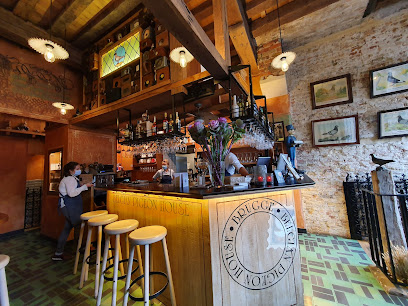
De Middenstand
Experience authentic Belgian cuisine at De Middenstand in Bruges – where tradition meets flavor in every dish.
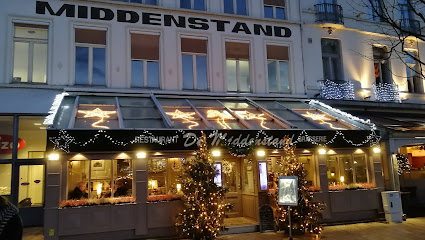
ONE Restaurant
Savor authentic Belgian flavors at ONE Restaurant in Bruges – where culinary tradition meets modern elegance.
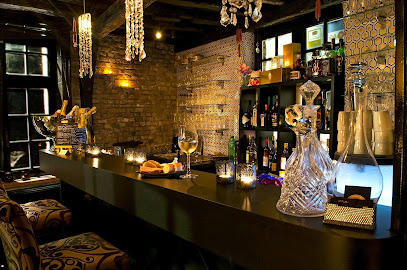
Het Rand Restaurant and Bar
Discover the perfect blend of delicious cuisine and live music at Het Rand Restaurant and Bar in Bruges.
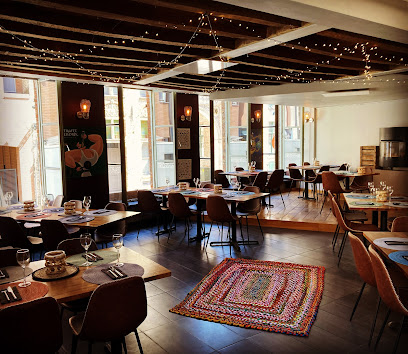
Restaurant De Wijngaert
Experience authentic Belgian cuisine at Restaurant De Wijngaert in Bruges - where tradition meets flavor in every dish.
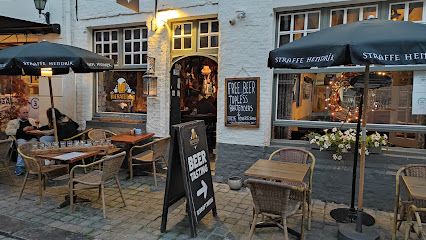
Cafe de Gilde
Discover Café de Gilde in Bruges - where delicious Belgian cuisine meets cozy ambiance at affordable prices.

Markets, malls and hidden boutiques
Dille & Kamille - Brugge
Explore Dille & Kamille in Brugge for a delightful mix of unique gifts, home goods, and local specialties that capture the spirit of this enchanting city.

Juttu
Explore Juttu in Bruges for stylish clothing, unique gifts, and a delightful shopping experience that captures the essence of this historic city.
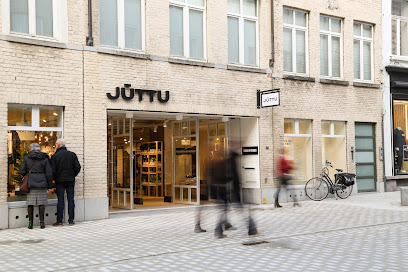
Veritas
Explore Veritas in Bruges for an exquisite selection of fashion accessories, unique gifts, and crafting supplies that inspire creativity and style.

Olleke, Wizarding Shop Brugge
Discover the enchanting world of collectibles at Olleke, Wizarding Shop Brugge – where magic meets memorabilia in a charming atmosphere.
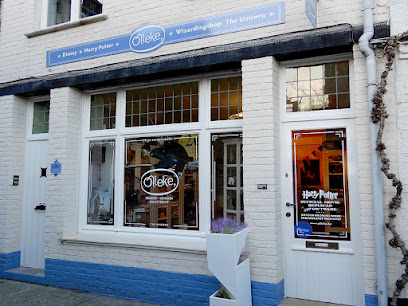
Jelly Jazz - Brugge
Explore Jelly Jazz in Bruges – your go-to gift shop for unique souvenirs and local art that capture the spirit of this enchanting city.
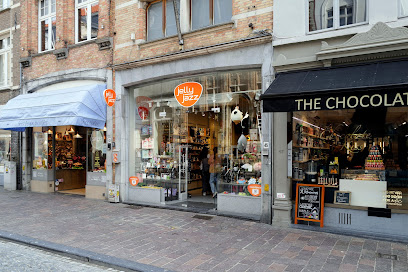
Het Brugs Theehuis
Immerse yourself in the enchanting world of tea at Het Brugs Theehuis, Bruges' hidden gem for tea lovers and curious travelers alike.

Käthe Wohlfahrt
Experience the magic of Christmas year-round at Käthe Wohlfahrt, Bruges' premier destination for festive decorations and unique gifts.
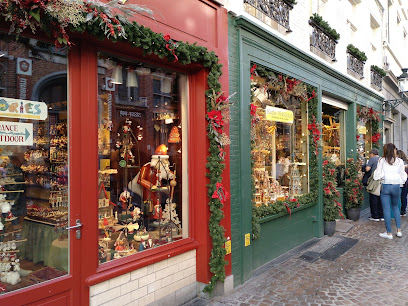
Bubbles at Home
Discover unique gifts and local treasures at Bubbles at Home, your go-to shop in Bruges for memorable souvenirs.
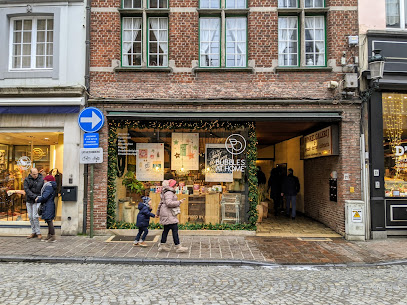
Delvaux Bruges
Explore luxury at Delvaux Bruges, the oldest leather goods house, offering exquisite handbags and accessories in the heart of a medieval gem.

Jean de Bruges
Discover the charm of Bruges at Jean de Bruges, a boutique offering unique artisanal products and local delicacies in an enchanting setting.
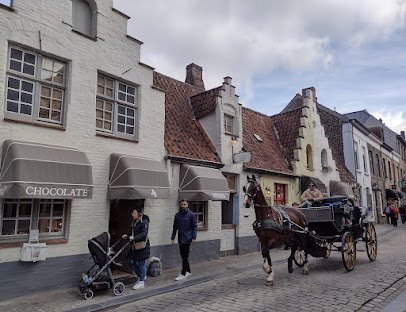
G-Star RAW Store
Discover the G-Star RAW Store in Bruges for cutting-edge fashion and premium denim that embodies urban style and sustainability.

Chocoladehuisje
Discover the sweet side of Bruges at Chocoladehuisje, where handcrafted Belgian chocolates await your taste buds in a charming setting.
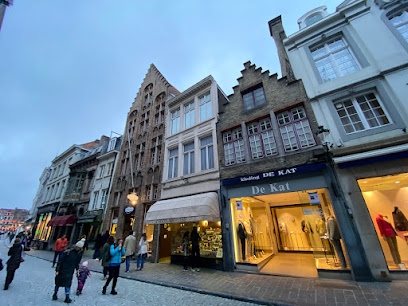
CASA Brugge Geldmuntstraat
Explore CASA Brugge Geldmuntstraat for unique gifts, home goods, and local craftsmanship that capture the essence of Bruges.
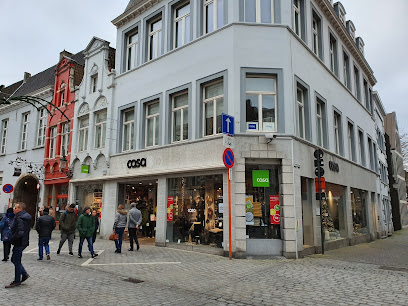
Toucan
Explore the enchanting Toucan Gift Shop in Bruges for unique souvenirs and local crafts that embody the charm of this historic city.
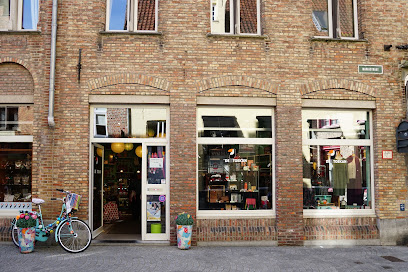
'T Apostelientje
Explore unique antiques and rich history at 'T Apostelientje, a hidden gem in the heart of Bruges, perfect for history enthusiasts and collectors.
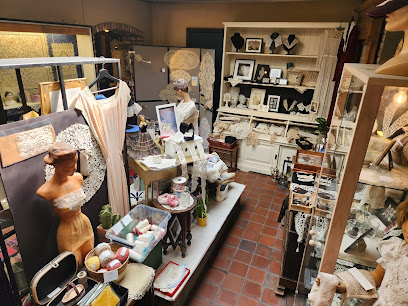
Essential bars & hidden hideouts
De Garre
Discover De Garre, Bruges’ enchanting bar and cafe, renowned for its vast selection of Belgian beers and charming medieval ambiance.
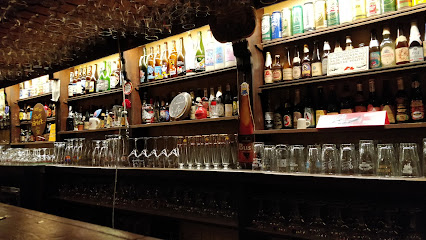
Le Trappiste
Discover the authentic flavors of Belgium at Le Trappiste, Bruges' charming bar and café with an extensive beer selection.
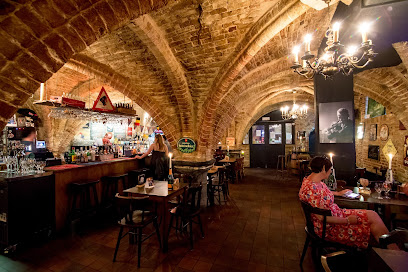
Cafe Rose Red
Discover the charm of Cafe Rose Red in Bruges - a delightful bar and restaurant offering unique flavors and a vibrant atmosphere.
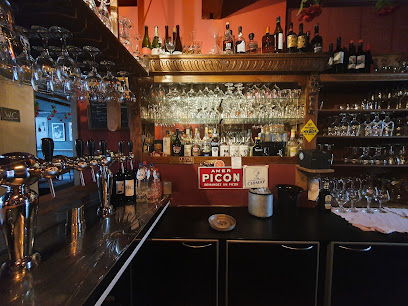
Bar Des Amis
Discover the charm of Bruges at Bar Des Amis, where delightful drinks and a warm atmosphere await in the heart of Belgium.
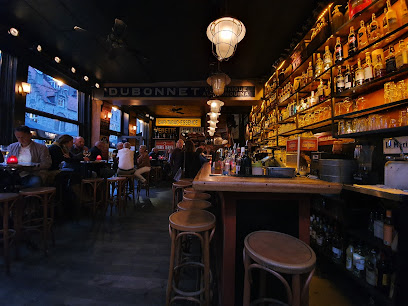
The Monk
Experience the vibrant sports culture of Bruges at The Monk, a lively sports bar with pool tables and live events in a cozy atmosphere.
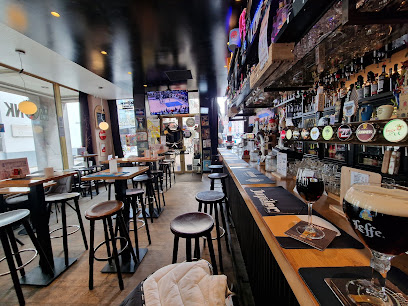
Groot Vlaenderen
Discover the exquisite cocktail creations at Groot Vlaenderen, Bruges' premier cocktail bar, offering a vibrant atmosphere and exceptional service.
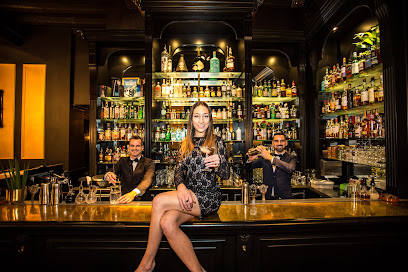
@ The Pub
Discover the vibrant atmosphere and extensive beer selection at @ The Pub in Bruges, a favorite spot for locals and tourists alike.
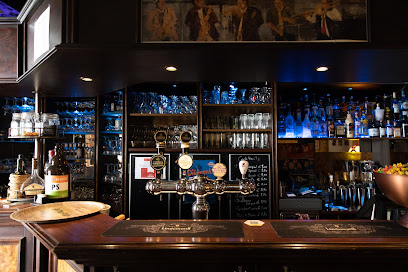
Bauhaus Bar
Experience the vibrant ambiance of Bauhaus Bar in Bruges, where locals and tourists meet to enjoy delightful drinks and lively sports events.
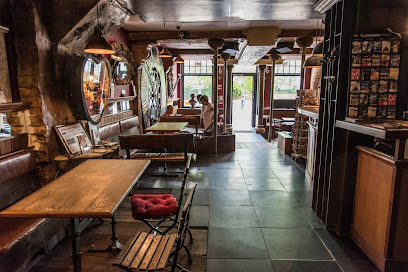
Bieratelier Brugge
Experience the best of Belgian beer and gourmet burgers at Bieratelier Brugge, a must-visit bar and restaurant in the heart of Bruges.
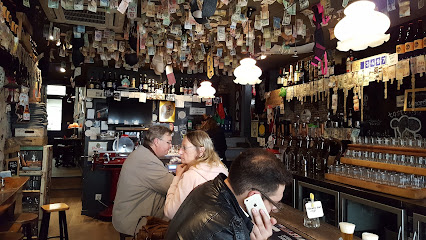
De Kelk
Discover the vibrant live music scene at De Kelk, Bruges' premier destination for unforgettable nights filled with great tunes and a lively atmosphere.

BAR 'N
Discover the inviting atmosphere and unique style of BAR 'N, a must-visit bar in the heart of Bruges, Belgium.
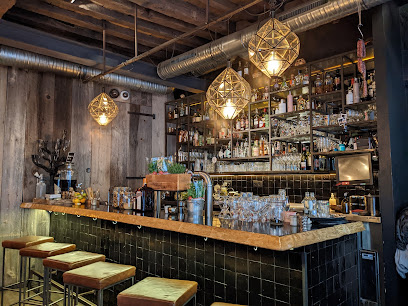
Beers Yesterday's World - Brugge
Experience the charm of Brugge at Beers Yesterday's World, a bar and antique shop offering local brews and vintage treasures.
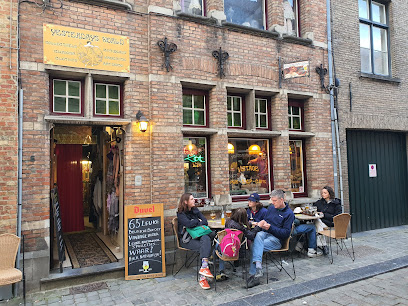
The Vintage
Discover The Vintage Bar in Bruges, where cozy ambiance meets an impressive drink selection for an unforgettable night out.
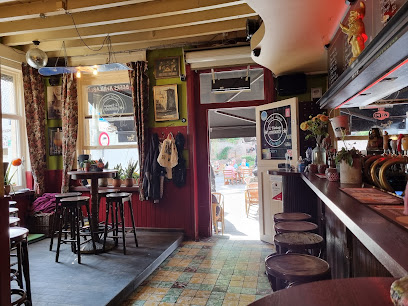
Duvelorium Belgian Beer Bar
Immerse yourself in the heart of Bruges with a delightful selection of Belgian beers at Duvelorium Belgian Beer Bar, where culture and flavor meet.
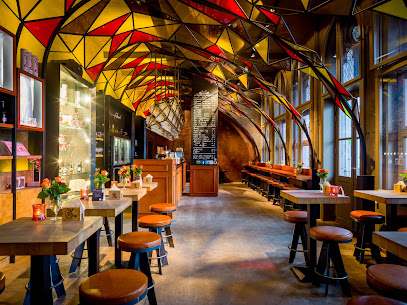
La Casita
Experience the vibrant nightlife of Bruges at La Casita, a charming bar offering a cozy atmosphere and a wide selection of drinks.
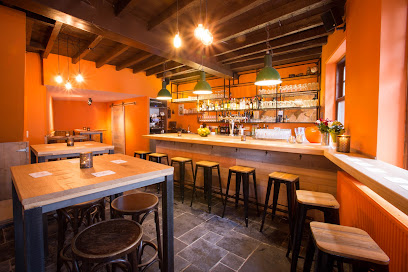
Local Phrases
-
- HelloHallo
[ha-lo] - GoodbyeTot ziens
[tot zeens] - YesJa
[ya] - NoNee
[nee] - Please/You're welcomeAlstublieft
[al-stu-bleeft] - Thank youDank u
[dank oo] - Excuse me/SorrySorry
[sor-ry] - How are you?Hoe gaat het?
[hu gaht hut] - Fine. And you?Goed. En met jou?
[hut. en met yow] - Do you speak English?Spreekt u Engels?
[spreekt oo en-gels] - I don't understandIk begrijp het niet
[ik buh-greyp hut neet]
- HelloHallo
-
- I'd like to see the menu, pleaseIk zou graag de menukaart zien, alstublieft
[ik zou khraag duh men-yu-kart zeen, al-stu-bleeft] - I don't eat meatIk eet geen vlees
[ik eet khayn vlees] - Cheers!Proost!
[prohst] - I would like to pay, pleaseIk zou graag willen betalen, alstublieft
[ik zou khraag vil-len buh-ta-len, al-stu-bleeft]
- I'd like to see the menu, pleaseIk zou graag de menukaart zien, alstublieft
-
- Help!Help!
[help] - Go away!Ga weg!
[ga wekh] - Call the Police!Bel de politie!
[bel duh poh-li-see] - Call a doctor!Bel een dokter!
[bel ayn dok-ter] - I'm lostIk ben verdwaald
[ik ben fur-dwahld] - I'm illIk ben ziek
[ik ben zik]
- Help!Help!
-
- I'd like to buy...Ik zou graag willen kopen...
[ik zou khraag vil-len koh-pen] - I'm just lookingIk ben gewoon aan het kijken
[ik ben khuh-woon ahn hut kee-ken] - How much is it?Hoeveel kost het?
[hu-vel kost hut] - That's too expensiveDat is te duur
[dat is tuh duhr] - Can you lower the price?Kunt u de prijs verlagen?
[kunt oo duh prays vuh-rah-ghen]
- I'd like to buy...Ik zou graag willen kopen...
-
- What time is it?Hoe laat is het?
[hu laht is hut] - It's one o'clockHet is één uur
[het is ayn ur] - Half past (10)Half tien
[half teen] - MorningOchtend
[okh-tent] - AfternoonNamiddag
[na-mi-dahkh] - EveningAvond
[ah-vohnt] - YesterdayGisteren
[khis-tuh-ren] - TodayVandaag
[vahn-dahkh] - TomorrowMorgen
[mor-khen] - 1Eén
[ayn] - 2Twee
[tweh] - 3Drie
[dree] - 4Vier
[veer] - 5Vijf
[vayf] - 6Zes
[zehs] - 7Zeven
[zay-ven] - 8Acht
[ahkht] - 9Negen
[nay-khen] - 10Tien
[teen]
- What time is it?Hoe laat is het?
-
- Where's a/the...?Waar is een/de...?
[vahr is ayn/de] - What's the address?Wat is het adres?
[vat is hut ah-dres] - Can you show me (on the map)?Kunt u mij tonen (op de kaart)?
[kunt oo may toh-nen (op de kaart)] - When's the next (bus)?Wanneer is de volgende (bus)?
[vahn-er is duh vol-hen-duh (bus)] - A ticket (to ....)Een ticket (naar ....)
[ayn ticket (nar)]
- Where's a/the...?Waar is een/de...?
History of Bruges
-
Bruges, often referred to as the 'Venice of the North,' traces its origins back to the Roman era. The name 'Bruges' is derived from the Old Dutch word 'brugj', meaning 'bridge'. Its strategic location near the North Sea made it an important trading post during medieval times.
-
Between the 12th and 15th centuries, Bruges flourished as a major center for trade and commerce. It became one of the wealthiest cities in Europe, known for its thriving wool and cloth industries. The construction of the Belfry of Bruges and the Basilica of the Holy Blood during this period are testaments to its prosperity.
-
The decline of Bruges began in the 16th century due to the silting of the Zwin, the waterway that connected the city to the North Sea. This natural event, coupled with political instability and competition from other trading cities like Antwerp, led to Bruges losing its economic prominence.
-
Bruges experienced a cultural and economic revival in the 19th century, spurred by the Romantic movement which celebrated medieval art and architecture. The restoration of historical buildings and the burgeoning tourism industry brought new life to the city. Bruges' unique charm and well-preserved medieval architecture began attracting visitors from around the world.
-
During World War I, Bruges was occupied by German forces but managed to escape significant destruction, unlike many other European cities. In World War II, it was again occupied, but the city remained mostly intact, preserving its historical heritage.
-
In 2000, the historic center of Bruges was declared a UNESCO World Heritage site. The city is now a vibrant cultural hub, renowned for its picturesque canals, cobblestone streets, and exquisite medieval architecture. Annual events like the Bruges Triennial and the Procession of the Holy Blood continue to celebrate its rich history and culture.
Bruges Essentials
-
Bruges is well-connected by various modes of transportation. The nearest major airport is Brussels Airport (BRU), which is approximately 100 kilometers away. From Brussels Airport, you can take a direct train to Bruges, which takes about 1.5 hours. Alternatively, you can fly into Ostend-Bruges International Airport (OST), which is closer but has fewer international flights. From Ostend, you can take a train or taxi to Bruges. If you are coming from other parts of Belgium or Europe, Bruges is easily accessible by train, with frequent services from major cities like Brussels, Ghent, and Antwerp. Driving is also an option, with well-maintained highways connecting Bruges to other cities.
-
Once in Bruges, getting around is straightforward. The city center is compact and pedestrian-friendly, making walking the best way to explore. For longer distances, you can rent a bicycle from numerous rental shops around the city. Public buses operated by De Lijn cover the city and surrounding areas, and tickets can be purchased at kiosks or via mobile apps. Taxis are available but can be expensive. For a unique experience, consider taking a canal tour by boat to see the city from a different perspective.
-
The official currency in Bruges is the Euro (EUR). Credit and debit cards are widely accepted in hotels, restaurants, and shops, but it is advisable to carry some cash for small purchases or in case you visit places that do not accept cards. ATMs are readily available throughout the city. Contactless payments are also commonly accepted, making transactions quick and convenient.
-
Bruges is generally a safe city for tourists, but it is always wise to take standard precautions. Petty crimes like pickpocketing can occur, especially in crowded areas such as the Markt and train stations. Be vigilant with your belongings and avoid carrying large sums of cash. The neighborhoods within the city center are safe, but as with any tourist destination, always stay aware of your surroundings and avoid poorly lit areas at night.
-
In case of emergency, dial 112 for immediate assistance, which is the European emergency number for police, fire, and medical services. The main hospital in Bruges is AZ Sint-Jan, located at Ruddershove 10. Pharmacies are available throughout the city for minor health issues, and many operate on a 24-hour basis. It is advisable to have travel insurance that covers medical emergencies.
-
Fashion: Do dress comfortably for walking, but also consider smart casual attire for dining out. Avoid overly casual clothing like gym wear in upscale restaurants. Religion: Do respect local customs when visiting churches. Silence your phone and dress modestly. Public Transport: Do validate your ticket before boarding buses. Don't occupy priority seats meant for elderly or disabled passengers. Greetings: Do greet people with a polite 'hello' or 'bonjour'. A handshake is common in formal situations. Eating & Drinking: Do try local delicacies like Belgian waffles, chocolates, and beers. Don't rush your meal; dining is often a leisurely experience.
-
To experience Bruges like a local, visit the local markets such as the Saturday market at 't Zand Square for fresh produce and regional specialties. Engage with locals, who are generally friendly and willing to share tips. Don't miss the chance to explore less touristy areas like the Ezelstraat quarter for a more authentic experience. Renting a bike to explore the city and its surroundings is highly recommended. For a unique experience, visit a local brewery like De Halve Maan to learn about Belgian beer culture.
Trending Landmark in Bruges
-
Belfry of Bruges
-
Market Square
-
Minnewater Park
-
Church of Our Lady
-
Boattour Bruges
-
Sint-Salvatorskathedraal
-
Bruges Beer Experience
-
Basilica of the Holy Blood
-
Historium Bruges
-
Huisbrouwerij De Halve Maan
-
De Burg
-
Boniface Bridge (Bonifaciusbrug)
-
Frietmuseum
-
Groeninge Museum
-
Torture Museum Oude Steen Brugge
Nearby Cities to Bruges
-
Things To Do in Zeebrugge
-
Things To Do in Blankenberge
-
Things To Do in Knokke-Heist
-
Things To Do in De Haan
-
Things To Do in Ostend
-
Things To Do in Ostend-Bruges International Airport
-
Things To Do in Nieuwpoort
-
Things To Do in Ghent
-
Things To Do in Kortrijk
-
Things To Do in Ypres
-
Things To Do in Aalst
-
Things To Do in Lille
-
Things To Do in Tournai
-
Things To Do in Antwerp
-
Things To Do in Brussels








